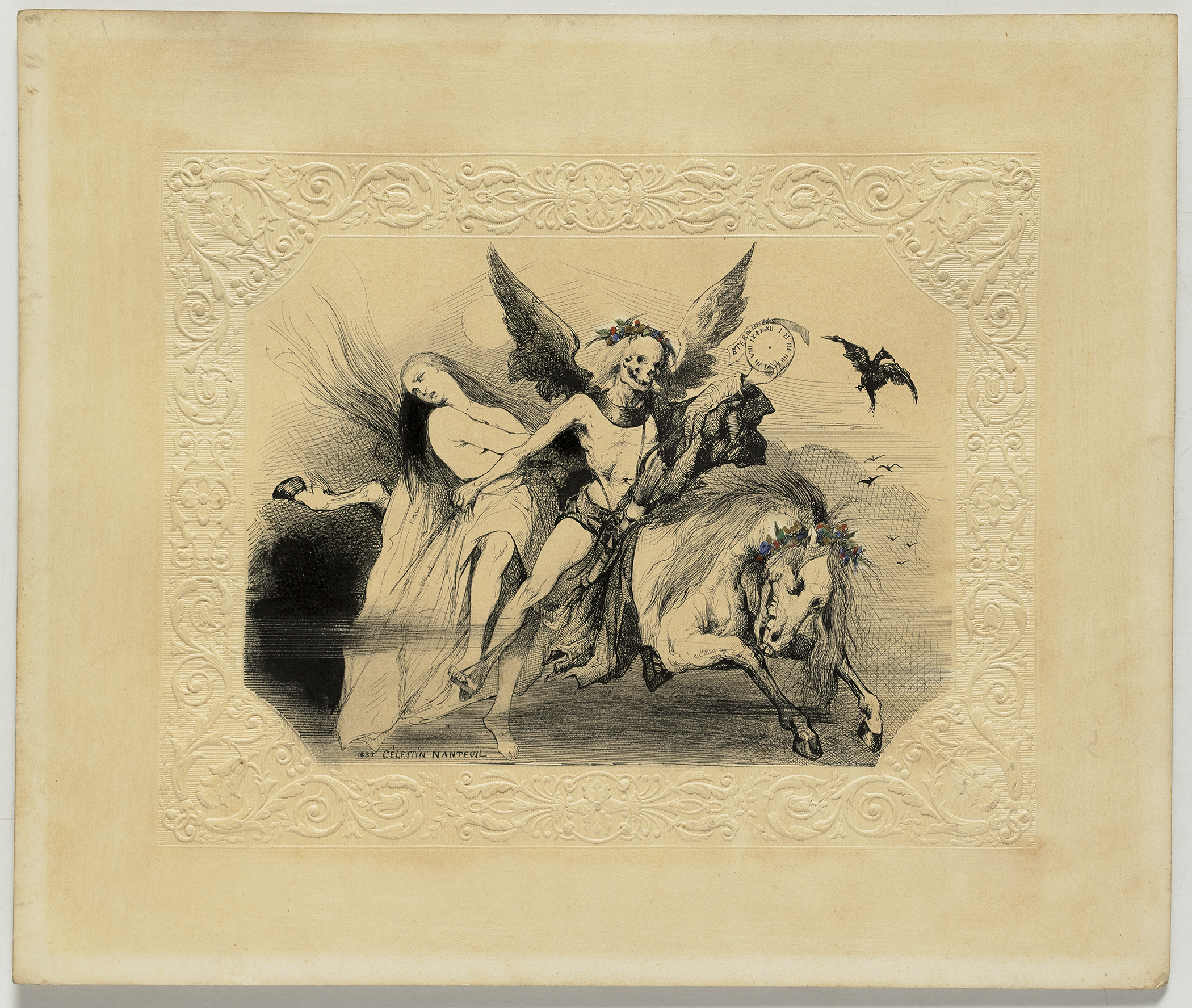Trained at Beaux-Arts de Paris, in the studio of Ingres, Célestin Nanteuil is the Romantic engraver par excellence. Inspired by the literature of the Romantic period—Hugo, Dumas, and Gautier—he placed his creative independence and his ornamentalist flair at the service of writers, painters, and journals, with all of his work being illustrations or interpretations. His iconographic repertoire mixed “decorations from the Middle Ages and Renaissance personages, gnomes and angels, monstrous figures and seraphic women,” and was admired by Théophile Gautier, who praised his “inexhaustible imagination.” After his “early Romantic surge” came an “obscure and impoverished maturity,” according to his biographer Aristide Marie. At the end of the Second Empire, he was a genre painter and director of the École des Beaux-arts de Dijon, receiving the Légion d’honneur in 1868.
Lénore is emblematic of the Romantic vein in which the artist excelled in the 1830s. Illustrating a passage from Lenore by German poet Gottfried August Bürger (1747–1794), known in France thanks to its 1829 translation by Gérard de Nerval. Evoking the amorous flight of a young woman and a horse rider who is revealed to be a vampire, this Gothic ballad also inspired Franz Liszt and Ary Scheffer. The drawing depicts the moment when the rider reveals his true face:
But see! But see! in an eyelid’s beat,
Towhoo! a ghastly wonder!
The horseman’s jerkin, piece by piece.
Dropped off like brittle tinder!
Fleshless and hairless, a naked skull,
The sight of his weird head was horrible;
The lifelike mask was there no more.
And a scythe and a sandglass the skeleton bore. (Translation by Dante Gabriel Rossetti)
Nanteuil had already supplied an illustration of this scene for a libretto published in 1833; here, he retains the horrific character, a pretext for invoking all the elements of the Gothic aesthetic: in the moonlight and among clouds of dark birds, the rider, half man, half skeleton, leads the undead horse that carries his naked lover, hair outspread, on its back. Scheffer chose to illustrate this same scene in his oil on canvas, Les morts vont vite (1830, Musée de la Vie Romantique, Paris).
With this rare sheet, Beaux-Arts de Paris enhances its collection with a work that perfectly encapsulates the Romantic imagination, fueled by literature and fantasy, from the hand of one of its most talented representatives.

Lénore, 1835 Plume et encre de Chine, rehauts de gouache, 14,2 x 19,5 cm © Beaux-Arts de Paris, EBA 11178



